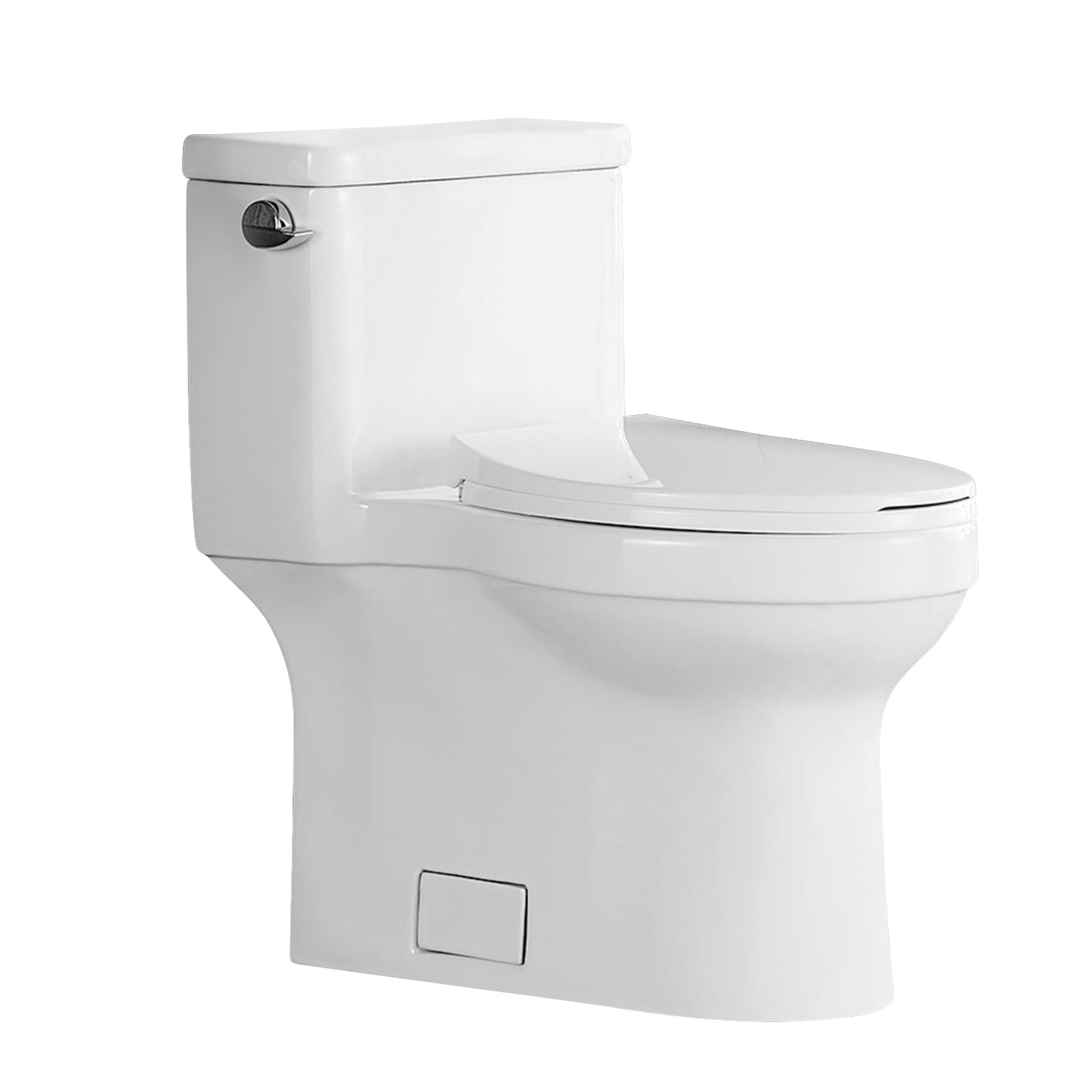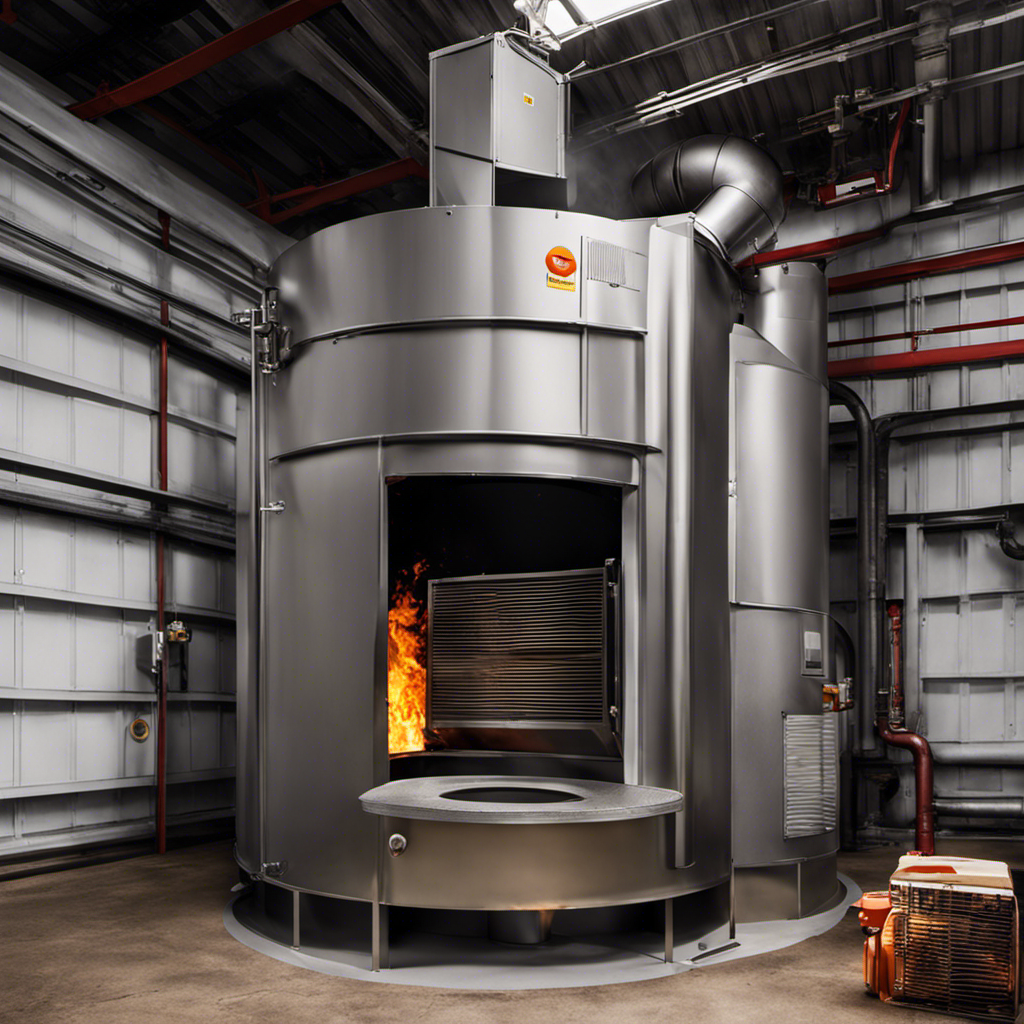Have you ever found yourself in a panic as your toilet started overflowing? It’s a situation none of us want to deal with, but unfortunately, it happens.
In this article, I’ll explore the common causes of toilet overflow, the signs to look out for, and most importantly, how to prevent it from happening in the first place.
So grab a cup of coffee and let’s dive into the world of overflowing toilets, because knowledge is power when it comes to plumbing mishaps.
Key Takeaways
- Common causes of toilet overflow include clogged pipes, excessive toilet paper flushing, flushing feminine hygiene products, and flushing foreign objects.
- Signs and symptoms of a potential toilet overflow include rapidly rising water, strange gurgling noises, foul odor in the bathroom, water backing up in other fixtures, and slow draining in sinks or showers.
- Repair solutions for toilet overflow include using a plunger or toilet auger to remove a clog, replacing the fill valve, calling a professional plumber to clear a blocked sewer line, replacing the flapper to fix water leakage issues, and adjusting or replacing the float valve to regulate water level.
- To prevent toilet overflow, avoid flushing excessive amounts of toilet paper, do not flush non-flushable items, regularly inspect and maintain drain pipes, check and adjust water level in the tank, and maintain and repair flush valve and fill valve.
Common Causes of Toilet Overflow
The most common causes of a toilet overflowing are a clogged pipe or a faulty flapper valve.
A toilet clog occurs when there is an obstruction in the pipe that prevents water and waste from flowing freely. This can be caused by flushing excessive amounts of toilet paper, feminine hygiene products, or other foreign objects down the toilet.
Another common culprit is a faulty flapper valve, which is responsible for regulating the flow of water from the tank into the bowl. If the flapper valve does not close properly, water can continuously flow into the bowl, resulting in an overflow.
Additionally, high water pressure can also contribute to toilet overflow as it increases the force at which water enters the bowl.
Signs and Symptoms of a Potential Toilet Overflow
Check for signs like water rising rapidly, strange gurgling noises, or a foul odor coming from the bathroom. These could be indications of a potential toilet overflow. It is crucial to address this issue promptly to prevent further damage and inconvenience. Here is a table outlining common causes of toilet overflow and the corresponding repair solutions:
| Causes | Repair |
|---|---|
| Clogged Toilet | Use a plunger or toilet auger to remove the blockage. |
| Faulty Fill Valve | Replace the fill valve to ensure proper water flow. |
| Blocked Sewer Line | Call a professional plumber to clear the blockage in the sewer line. |
| Malfunctioning Flapper | Replace the flapper to fix water leakage issues. |
How to Prevent Toilet Overflow
To prevent a toilet from overflowing, you should regularly inspect and maintain the components that contribute to proper water flow. One of the most common causes of toilet overflow is a clogged drain. This can be prevented by avoiding flushing excessive amounts of toilet paper or other non-flushable items down the toilet.
Additionally, it is important to check the water level in the tank to ensure it is not too high, as this can lead to overflow. Another key factor in toilet overflow prevention is maintaining the flush valve and fill valve. These valves can become worn or damaged over time, leading to improper water flow. Regularly inspecting and repairing these components can help prevent toilet overflow and costly repairs.
If you do experience a toilet overflow, it is important to address the issue promptly to prevent further damage and potential water damage in your home.
Steps to Take When Your Toilet Starts Overflowing
If your toilet starts overflowing, you should immediately turn off the water supply to prevent further damage. This is a crucial step to take in order to avoid water damage and potential flooding in your bathroom.
Once you have turned off the water supply, you can take the following steps to address the issue:
-
Clear the blockage: Use a plunger to try and dislodge the clog causing the overflow. Apply firm, consistent pressure to create a vacuum and push the blockage through the pipes.
-
Check the tank components: Lift the lid of the toilet tank and inspect the flapper valve and fill valve. Ensure they are functioning properly and not causing the overflow.
-
Call for professional help: If the overflow persists or if you are unable to identify and fix the problem, it is advisable to contact a professional toilet repair service or emergency plumbing services. They have the expertise to diagnose and resolve the issue efficiently and effectively.
Troubleshooting Tips for Dealing With a Toilet Overflow
Make sure you turn off the water supply immediately when your toilet starts overflowing to prevent further damage. Dealing with a toilet overflow can be a messy and stressful situation, but with some troubleshooting tips, you can tackle the issue on your own. Check out the table below for some DIY plumbing solutions to common toilet overflow problems.
| Problem | Possible Solution |
|---|---|
| Clogged Drain | Use a plunger to try and remove the blockage. If that doesn’t work, try using a drain snake or call a professional plumber. |
| Faulty Fill Valve | Adjust or replace the fill valve to regulate the water level in the tank. |
| Flapper Valve not sealing | Replace the flapper valve to ensure a proper seal and prevent water from continuously running into the bowl. |
Remember to always exercise caution when attempting toilet repairs. If you are unsure or uncomfortable with the process, it’s best to consult a professional plumber to avoid causing further damage.
Frequently Asked Questions
What Are the Potential Health Risks Associated With a Toilet Overflow?
Potential health risks from a toilet overflow include waterborne diseases, mold growth, and contamination of surfaces. Prevention methods include regular maintenance, avoiding flushing non-flushable items, and addressing plumbing issues promptly.
How Can I Determine if the Toilet Overflow Is Caused by a Clog or a Problem With the Plumbing System?
Determining the cause of a toilet overflow can be like solving a puzzle. Look for signs of a clogged toilet, like slow draining or gurgling sounds. If the problem persists, it may require professional toilet overflow repair.
Are There Any Specific Toilet Models or Brands That Are More Prone to Overflowing?
Toilet overflow prevention tips: Regular maintenance and proper usage can help prevent overflows. Common causes of toilet overflows include clogs, faulty flapper valves, and high water pressure. It’s important to address these issues promptly to avoid further damage.
Can Using Certain Cleaning Products Increase the Likelihood of a Toilet Overflow?
Using certain toilet cleaning products can increase the likelihood of a toilet overflow. It’s important to be cautious and avoid using harsh chemicals that can cause blockages or damage to the plumbing system. Regular toilet maintenance is crucial to prevent these issues.
Is It Safe to Continue Using the Toilet After It Has Overflowed, or Should I Avoid Flushing Until the Issue Is Resolved?
It is not safe to continue using the toilet after it has overflowed. Flushing can exacerbate the issue and lead to further overflow. This can have a negative impact on hygiene and cleanliness in the bathroom.
Conclusion
In conclusion, dealing with a toilet overflow can be a frustrating and messy situation. However, by understanding common causes and signs, as well as implementing preventive measures, you can minimize the chances of it happening.
If you do find yourself facing an overflowing toilet, it’s important to take immediate action and follow the necessary steps to prevent further damage. Remember, a stitch in time saves nine, so don’t delay in addressing the issue.
By troubleshooting and taking appropriate measures, you can quickly resolve the problem and restore peace to your bathroom.










